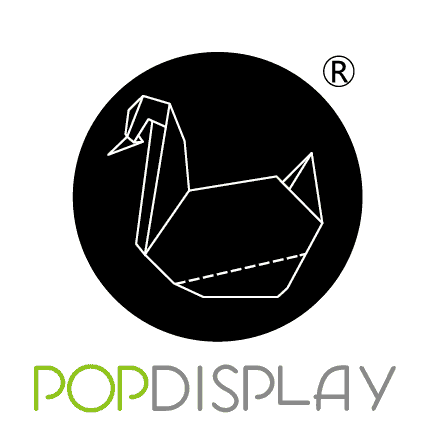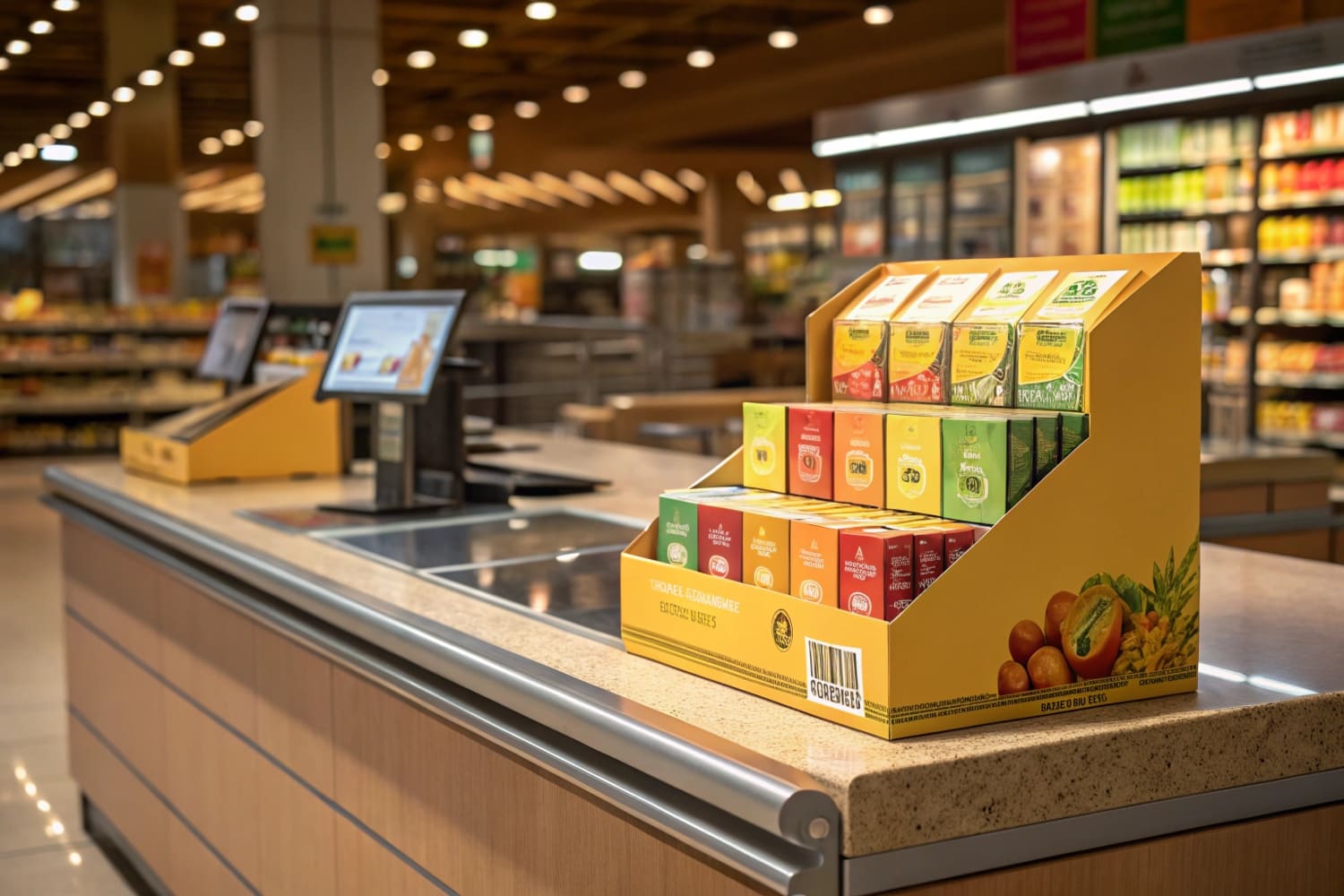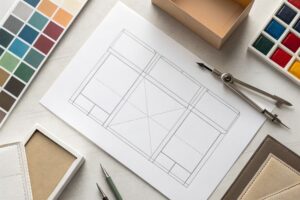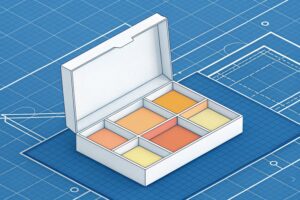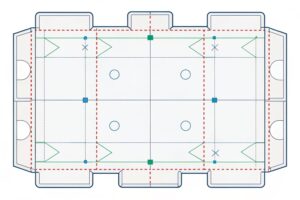Retail space is loud. Shoppers move fast. A weak display loses attention and sales. A clear match between display style and shopper intent fixes this. I show how.
Pick a display that matches shopper mission, product size, and store flow: floor for big impact, countertop for impulse, pallet for speed, shelf trays for facings, and interactive when story matters. Cardboard displays win on cost, speed, and sustainability.
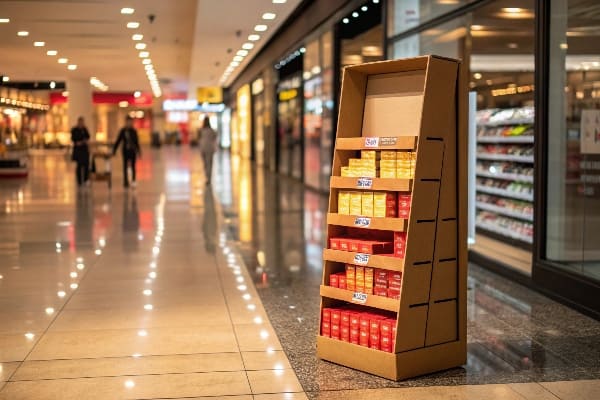
I will keep this simple. I will answer your key questions in order. I will give rules you can use today. I will show tables you can share with your team.
What type of displays seem to be more attractive to customers?
Many displays look busy. Shoppers hesitate. They walk away. I simplify choice so the display matches how people decide in seconds. Then attention turns into action.
Displays that attract most pair high contrast, clear hierarchy, and low friction: floor for discovery, countertop for impulse, pallet for bulk, shelf trays for clarity, and interactive nodes for education-heavy items.
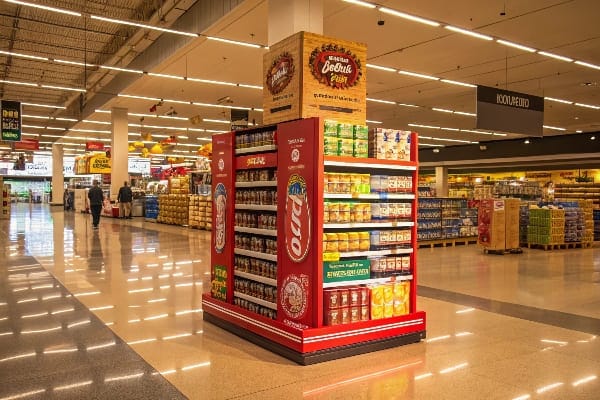
How shoppers notice first
I see three fast filters in stores: size, contrast, and proximity to the path. A tall floor unit interrupts the aisle. A bold header sets context. A clean color field frames the hero SKU. A tight footprint near a decision shelf reduces steps. Cardboard helps because I can scale height, print strong color, and keep weight low. I keep copy short. I use one promise, one proof, and one action. I use recyclable inks and water-based coatings1, since many buyers now look for green cues. In my factory, we test legibility from three meters. We remove clutter until the promise reads in three seconds. This matters in the United States, Canada, the United Kingdom, and Australia, where store flows are fast and standards are strict. In Asia-Pacific, growth is quick, so I design modular kits2 that fit different aisles. This reduces risk and increases reuse across chains.
| Display type | When it attracts best | Why it works |
|---|---|---|
| Floor (standee/tower) | New launch, seasonal drops | Height, stopping power |
| Countertop (PDQ)3 | Checkout, small packs | Impulse, easy reach |
| Pallet | Club stores, promos | Speed, bulk value cue |
| Shelf tray | Crowded categories | Order, more facings |
| Interactive4 | Complex products | Education, data capture |
What is the best way to display merchandise?
Teams often stack more SKUs, hoping to sell more. Shoppers then freeze. I reduce options and guide the eye. I make the first choice easy.
The best way is to simplify: one hero, one price, one action, clean facings, eye-level placement, and proof of strength; then measure lift, dwell, and basket add-on.
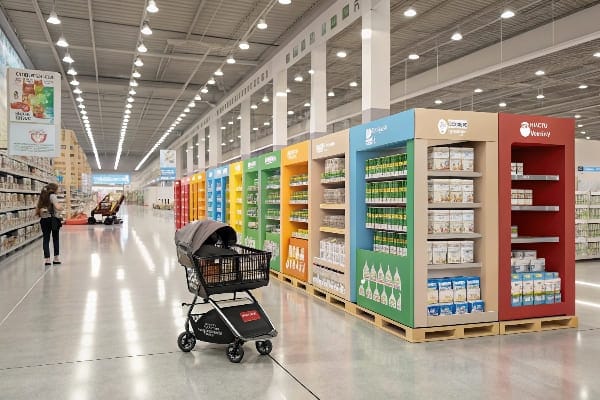
A clean layout that sells
I plan from the shopper path in. I put the hero SKU5 in the center band between waist and eye. I block by brand, not by mixed SKUs, so color fields stay solid. I keep three to five facings for the hero. I stage the upsell tier just right of the hero. I place clear price and a short benefit line. I avoid more than nine words on any panel. I use a flat-pack structure for fast setup, then add locking tabs so staff cannot misbuild it. I run load tests and transport tests because crushed corners kill trust. I print a QR code for story or specs. I add anti-sweep features for small, high-value items. I show sustainability icons6 only if backed by real certificates. In club channels, I use pallet skirts and corner posts to keep edges crisp. In pharmacies, I use narrow footprints to pass planogram checks.
| Principle | Action in store | KPI to watch |
|---|---|---|
| Focus | One hero SKU centered7 | +Sales lift vs. baseline |
| Clarity | One price, one CTA | Dwell time |
| Strength | Tested weight, tabs | Damage rate |
| Speed | Flat-pack, quick locks | Setup time |
| Proof | QR/specs/reviews | Conversion on scan |
What is an effective display?
Many teams call a display “effective” if it looks good. I do not. I call it effective only if it lifts sales and survives the real world.
An effective display lifts unit sales, improves brand recall, sets up fast, ships flat, passes strength tests, and meets sustainability rules without raising total landed cost.

What to measure and why it matters
I track three buckets: sell, serve, and survive. Sell means more units per store per week than the baseline shelf. Serve means less time to set up and restock. Survive means the unit holds weight, resists humidity, and makes it through transport. Cardboard wins when I pick the right flute and coatings. I choose single-wall for light goods and higher-grade corrugated for heavy gear. I use water-based ink for clean color and compliance. I design for repeat orders, so I keep the die-line stable and allow seasonal print swaps. In North America and Europe, buyers ask for recycled content8. I meet that with verified sources. Floor displays often lead share; in many reports they hold about forty to forty-five percent of POP volume, because they stop traffic and carry more units. I also add simple data capture options9 so we can learn and refine.
| Metric | Target | How to check |
|---|---|---|
| Sales lift10 | +15–30% vs. control | A/B by store set |
| Setup time | <10 minutes | Staff stopwatch |
| Damage rate | <1% in transit | Arrival audits |
| Restock time11 | <2 minutes | Time-and-motion |
| Recycling claim | Verified | Supplier docs |
How do you display products to attract customers?
Some brands shout with clutter. Shoppers feel stress and move on. I attract with contrast, order, and proof. I let the product speak first.
Use contrast, clear copy, and clean stock. Put the hero at eye level, show price, add one proof, keep edges tidy, and remove friction at reach and restock points.
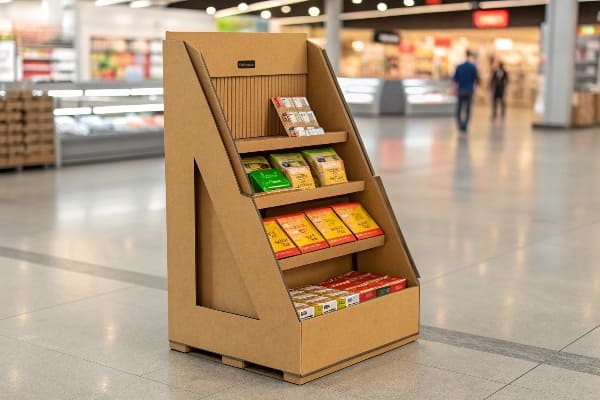
Simple tactics that win attention
I start with color contrast12 between the display body and the product. If the pack is dark, I use a light frame. If the pack is light, I use a dark frame. I add a bold header with one promise. I keep sub-copy short. I place price where the eye lands next. I align all boxes. I use shelf-ready trays so staff can drop and go. I add small motion only when needed, like a wobble tag for clearance. I never add sound in quiet stores. I keep the footprint tight so the unit does not break the aisle. I place the unit where the shopper must pass, not in dead corners. For complex items, I add a QR code13 to a short video. I test two versions in small pilots. I pick the winner with data, not taste. I then print at scale with digital presses for speed.
| Tactic | Use it when | Proof point |
|---|---|---|
| High contrast frame14 | Low-light aisles | Faster notice |
| One-line header | Crowded categories | Clear promise |
| Eye-level hero15 | New launches | Trial uplift |
| QR to specs | Complex items | Lower returns |
| Tight footprint | Narrow aisles | Store approval |
How do I display my product?
You may feel stuck. You may face tight deadlines. I have been there with many launches. I use a simple plan that keeps risk low and speed high.
Follow a five-step plan: define the shopper job, pick the display type, lock the structure, test with a sample, then print and ship with clear setup guides.
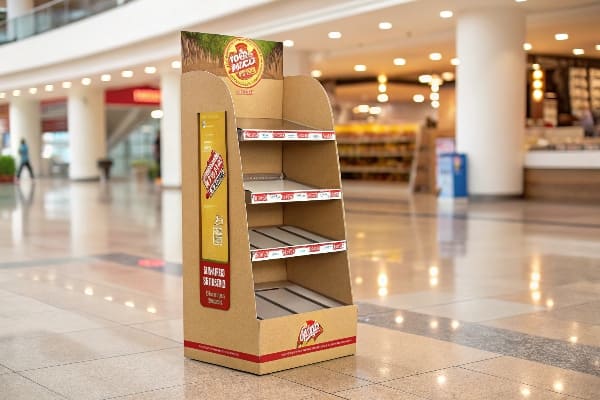
A step-by-step plan I use with buyers
I start with the shopper job to be done16. Is this for trial, trade-up, or stock-up? That choice sets the path. If I want impact, I choose a floor tower. If I need speed, I choose a pallet skirt for club stores. If I target impulse, I use a countertop PDQ. I lock the structure with CAD. I print 3D renders. I share two design routes and keep changes free until we agree. I build a white sample for strength tests. I run load and transport tests. I fix weak points early. I confirm certifications that the retailer needs. I print a short run on digital to check color. I include a photo guide inside the shipper so staff can set up fast. I then mass produce17 on one of our three lines and ship on time. I protect corners with inserts so displays arrive clean.
| Step | Tool | Output |
|---|---|---|
| Define job | Brief checklist | Clear goal |
| Pick type | Decision tree18 | Floor/PDQ/Pallet/Shelf |
| Lock structure | CAD + dieline | Stable kit |
| Test | White sample + load | Fix list |
| Produce | Digital/offset print19 | On-time ship |
What is a product display?
People mix terms and then plans go wrong. A product display is not only a box. It is a tool that guides a choice at the buying spot.
A product display is a branded structure that holds goods, frames benefits, and speeds decisions at the point of purchase; it can be floor, countertop, pallet, shelf-ready, or interactive.
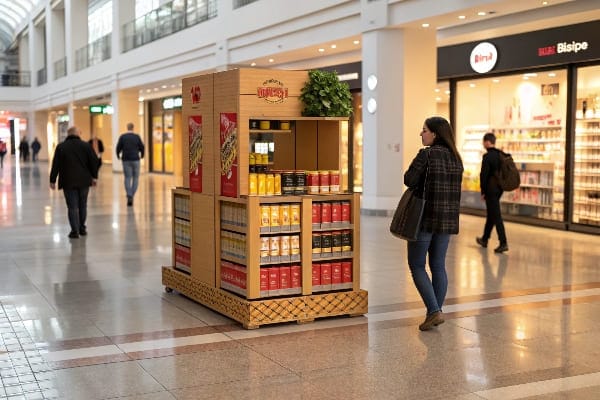
Clear definition and common formats
I define a product display20 as a stand-alone or shelf-ready unit that brings product, message, and access together. It works inside a store, at events, or in showrooms. Cardboard and corrugated board lead due to cost, print freedom, and recycling. Single-wall boards cover most needs; heavier goods may need stronger grades. Main formats include floor towers, PDQ trays for counters, pallet skirts for club stores, and shelf trays for planograms. Interactive units add screens or sensors when items need more education. Many market reports show floor POP displays21 as a large share, about forty to forty-five percent, because they deliver strong visual impact. The best display also fits retailer rules and ships flat. It sets up fast. It offers enough facings to stay in stock through the week. It should include clear graphics, safe edges, and a plan for recycling after use.
| Format | Core use | Key advantage |
|---|---|---|
| Floor | Launches, seasonal | Impact and capacity |
| Countertop (PDQ) | Checkout, small items22 | Impulse reach |
| Pallet | Club channels | Speed to floor |
| Shelf-ready tray | Aisle integration23 | Clean facings |
| Interactive | Complex tech/gear | Guided education |
Conclusion
Pick the display to fit the shopper’s job, prove strength, keep setup fast, and measure lift. Simple rules beat guesswork. Good structure plus clear copy wins.
Explore this link to understand how sustainable inks can enhance your brand’s eco-friendliness and appeal to conscious consumers. ↩
Discover how modular kits can streamline your store layout and reduce costs while maximizing space and flexibility. ↩
Explore how Countertop (PDQ) displays can boost impulse purchases and enhance customer experience at checkout. ↩
Discover the advantages of Interactive displays for educating customers and capturing valuable data. ↩
Understanding hero SKUs can enhance your merchandising strategy, leading to better sales and customer engagement. ↩
Exploring the use of sustainability icons can help you communicate your brand’s commitment to eco-friendliness, attracting conscious consumers. ↩
Understanding hero SKUs can help you optimize product placement and boost sales effectively. ↩
Exploring this link will provide insights into sustainability and how recycled content can enhance your packaging strategy. ↩
This resource will help you understand the importance of data capture in refining sales strategies and enhancing customer engagement. ↩
Explore this link to discover proven strategies that can help you boost your sales significantly. ↩
This resource offers insights and techniques to streamline your restocking process, enhancing efficiency. ↩
Understanding color contrast can enhance your product’s visibility and appeal, making it a crucial aspect of effective marketing. ↩
Exploring QR codes can reveal innovative ways to connect with customers and provide them with valuable information instantly. ↩
Explore how high contrast frames can enhance visibility and customer engagement in low-light areas. ↩
Learn about the impact of eye-level product placement on consumer behavior and sales uplift. ↩
Understanding the shopper’s job to be done can enhance your marketing strategies and improve customer satisfaction. ↩
Exploring mass production techniques can help streamline your operations and reduce costs, ensuring timely delivery. ↩
Understanding decision trees can enhance your project management skills and improve decision-making processes. ↩
Exploring the differences can help you choose the right printing method for your project needs. ↩
Understanding product displays can enhance your marketing strategies and improve in-store visibility. ↩
Exploring floor POP displays can provide insights into effective merchandising and customer engagement. ↩
Explore how checkout displays can boost impulse purchases and enhance customer experience. ↩
Learn about the advantages of aisle integration for better product visibility and sales. ↩
